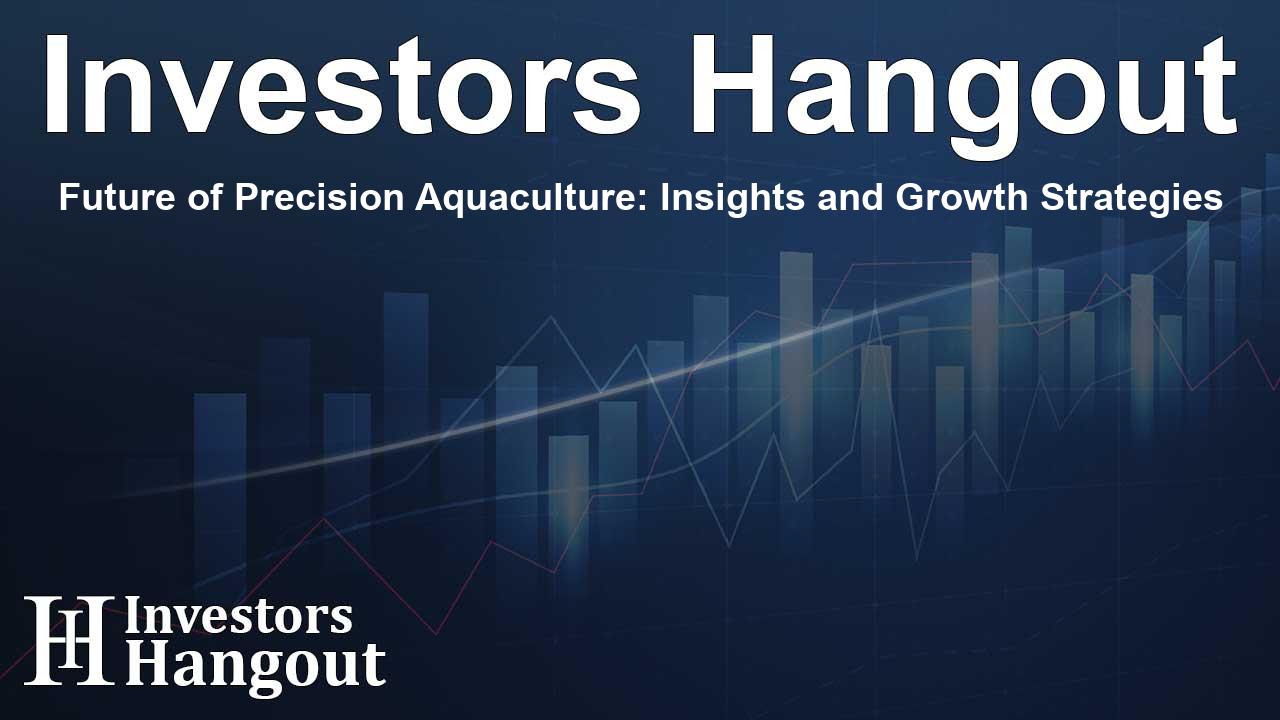Future of Precision Aquaculture: Insights and Growth Strategies

The Exciting Growth of the Precision Aquaculture Market
The precision aquaculture market is poised for remarkable expansion, with projections indicating a growth from USD 847.9 million to USD 1,434.5 million by 2030. This surge reflects a compound annual growth rate (CAGR) of approximately 11.1% as the industry adapts to modern challenges and embraces innovative technologies.
Driving Forces Behind Market Expansion
A significant impetus for growth in this sector stems from the increasing demand for real-time monitoring and automation within fish farming. With aquaculture operations evolving to become more intensive and environmentally focused, there is an urgent need to continuously monitor water quality parameters vital for ensuring fish health and growth optimization.
The Role of Automation in Aquaculture
Modern hardware-based control systems are now indispensable in precision aquaculture. Utilizing systems such as Programmable Logic Controllers (PLCs), Remote Terminal Units (RTUs), and sensor-integrated panels, farmers can automate critical processes like feeding, oxygenation, and water flow. This automation minimizes manual effort, reduces errors, and delivers consistent and efficient operations. By optimizing these processes, aquaculture farms can enhance efficiency, reduce mortality rates, and boost overall yields.
Focus on Sustainable Practices
As the global demand for sustainable seafood increases, the emphasis on efficient feed and resource management within aquaculture is becoming crucial. Inefficient feeding practices not only inflate operational costs but also contribute to pollution and jeopardize fish health. Sensor technology can counter this by detecting uneaten feed and monitoring critical water quality parameters. Farmers can adjust feeding schedules effectively, leading to better feed conversion ratios and reduced environmental impact.
Key Applications Driving Innovation
One of the standout applications within precision aquaculture is yield analysis and measurement. This technology plays a pivotal role in fine-tuning feeding practices and achieving effective stock management. Insights garnered from yield analysis allow aquaculture professionals to tailor feeding strategies according to the actual nutritional requirements of fish populations, thereby improving yields and operational cost-efficiency.
Emerging Market Trends and Opportunities
As the precision aquaculture market continues to evolve, several emerging trends are shaping its future. Increasing investment in smart technologies, particularly in land-based recirculating aquaculture systems (RAS), opens up significant avenues for market players. These systems exemplify a sustainable alternative to traditional offshore farming by optimizing resource usage and enhancing biosecurity. The integration of advanced monitoring technologies is central to the success of RAS, ensuring that water quality and fish health are maintained at optimal levels.
Regional Insights on Market Dynamics
Looking at global dynamics, China is anticipated to dominate the precision aquaculture market within the Asia Pacific region in the near future. This is largely attributed to the rapid expansion of land-based aquaculture systems and a robust regulatory framework mandating sustainable practices. The Chinese government is backing initiatives aimed at modernizing inland aquaculture and enhancing technology adoption, which further solidifies its leadership position in the industry.
The Competitive Landscape
The competitive landscape of the precision aquaculture market is characterized by several key players who are making significant strides in technology development. Companies like AKVA Group, ScaleAQ, and Innovasea Systems are leading the charge in adopting innovative solutions that enhance operational efficiency and sustainability in aquaculture practices.
Frequently Asked Questions
What is the projected value of the precision aquaculture market by 2030?
The market is expected to reach approximately USD 1,434.5 million by 2030.
What factors are driving growth in precision aquaculture?
The demand for real-time monitoring, automation, and sustainable seafood production are primary growth drivers.
How does automation improve aquaculture efficiency?
Automation minimizes manual labor, reduces errors, and enhances consistency in critical processes like feeding and oxygenation.
Why is yield analysis important in aquaculture?
Yield analysis helps in optimizing feeding practices, improving feed conversion ratios, and enhancing overall yield.
What role does China play in the precision aquaculture market?
China is emerging as the largest market player in Asia Pacific, driven by government investment and a focus on sustainable practices.
About The Author
Contact Addison Perry privately here. Or send an email with ATTN: Addison Perry as the subject to contact@investorshangout.com.
About Investors Hangout
Investors Hangout is a leading online stock forum for financial discussion and learning, offering a wide range of free tools and resources. It draws in traders of all levels, who exchange market knowledge, investigate trading tactics, and keep an eye on industry developments in real time. Featuring financial articles, stock message boards, quotes, charts, company profiles, and live news updates. Through cooperative learning and a wealth of informational resources, it helps users from novices creating their first portfolios to experts honing their techniques. Join Investors Hangout today: https://investorshangout.com/
The content of this article is based on factual, publicly available information and does not represent legal, financial, or investment advice. Investors Hangout does not offer financial advice, and the author is not a licensed financial advisor. Consult a qualified advisor before making any financial or investment decisions based on this article. This article should not be considered advice to purchase, sell, or hold any securities or other investments. If any of the material provided here is inaccurate, please contact us for corrections.
